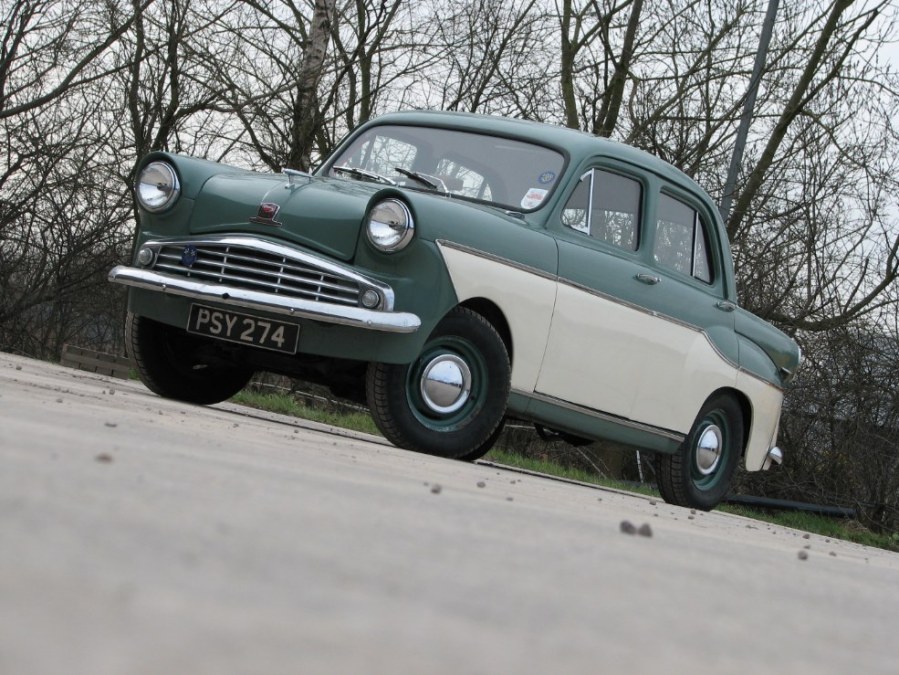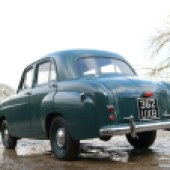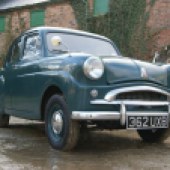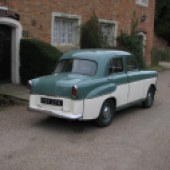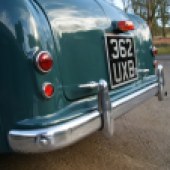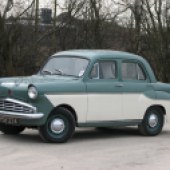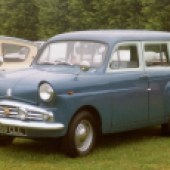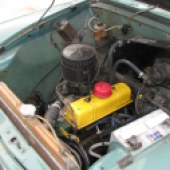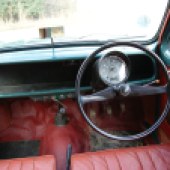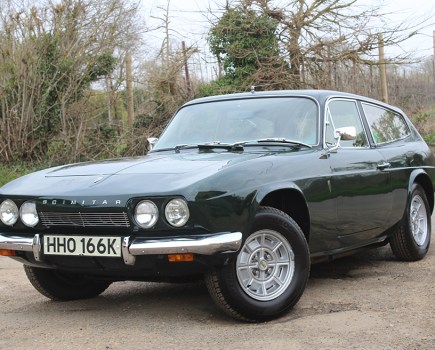Although mostly associated with bare-bones specs and rapid rust, there’s more to the Standard 8, 10 & Pennant than meets the eye
Words: Jack Grover
After the Second World War the Standard Motor Company was still under the command of its vigorous, progressive but decidedly mercurial and dictatorial chairman Sir John Black. He instructed his engineers to develop a small car more suited for the austerity-ridden British domestic market than the big Vanguard on which Standard had focused its post-war efforts. And it had to be sold for less than either the Morris Minor or the Austin A30.
Such a brief may have prompted a crude and simplistic design, but in fact what would become the Standard 8, 10 and Pennant were remarkably forward-thinking for the early 1950s. It’s just that so much of what was new about the design became the norm in later years that it seems conventional in retrospect. It was Standard’s first unitary-built car. A concern at the time was that unitary bodies with integrated panels would be expensive to repair after even minor crash damage, so the new Standard featured bolt-on external wing panels on each corner.
A subframe supported the engine, gearbox, the front suspension and the front bumper. Independent front suspension was by coil springs, double wishbones and telescopic dampers, while at the rear was a banjo-type live axle with leaf springs with lever arm dampers. Brakes were hydraulic-actuated drums all-round, while the steering was the only part that was a bit behind the times, being a Burman worm-and-nut arrangement little changed since the old ‘Flying’ Standard range of the 1930s.
To make the car sell for the low price required while incorporating all this cleverness, the specification had to be kept at truly monastic levels. As presented at its launch, the Standard 8 (although the Horsepower Tax had been abolished, the name recalled a previous and popular small Standard) featured vertically sliding windows, hammock-type seats, a single windscreen wiper, a single sun visor, no hubcaps, no radiator grille and no boot lid – the luggage compartment was a one-piece pressing, accessed from within by folding down the rear seats. While this allowed the Standard 8 to, as Sir John insisted, undercut the Morris Minor by as much as £80, it was a distinctly unappealing specification that detracted from the car’s advanced engineering, spacious cabin, fine driving qualities and good economy. Most buyers paid for the ‘missing’ features to be reinstated as dealer-fit options.
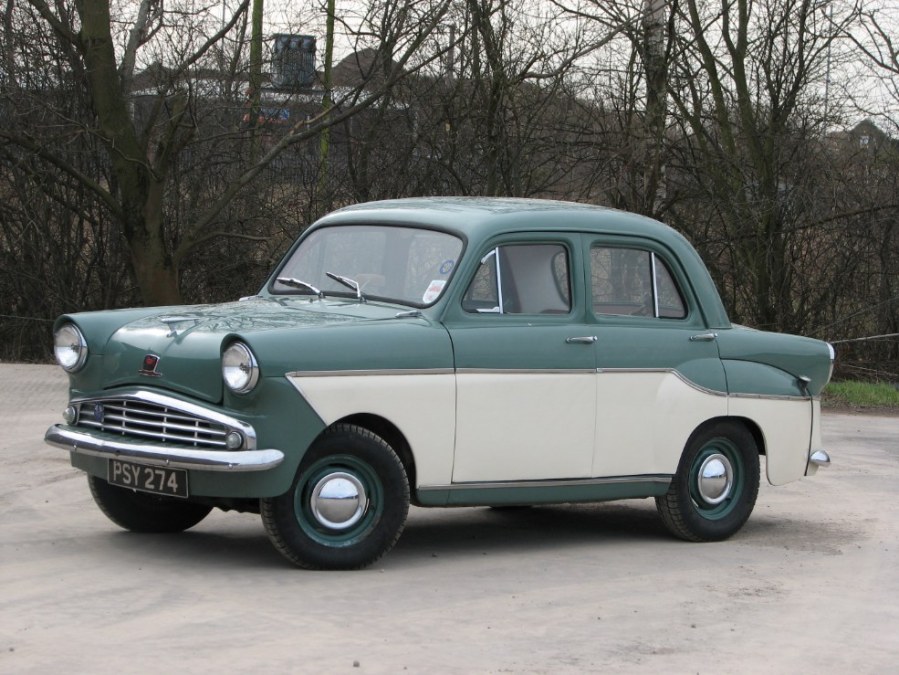
The story of the Standard 8, 10 and Pennant range is of steady improvement from the monastic original, the full scope of which is covered in our timeline below. Of course the utterly basic specification of the original 8 couldn’t last – the larger-engined 10 always had a more normal level of equipment and it was soon possible to buy an 8 with similar features, which nearly everyone did. Standard stole another lead on the big players with the introduction of the 10 Companion, an all-steel five-door estate car at a time when no other small estate on the British market combined those features. The small Standards had sold well and contributed usefully to the company’s bottom line.
But the austerity years were over and buyers were wanting, and expecting, more than plain basic transport. Even in 1953 they had wanted hubcaps and two wipers. By 1957 they wanted at least a modicum of style, comfort and performance. Therefore Standard launched the Pennant, which was immediately identifiable by its rear tailfins and (optional but commonly chosen) two-tone paint. The interior boasted plusher seats (with optional leather) and instead of the 8 and 10’s oh-so-practical fascia with a deep parcel shelf and a single instrument, the Pennant had a full-width dashboard with two instruments and fittings for an (optional) radio.
The Pennant gave a lift to sales but not a sustainable one, and as the 1960s approached the Standard 8, 10 and Pennant – and the Standard marque as a whole – carried a dowdy, old-fashioned and unglamorous image. Standard-Triumph wasn’t big enough to stay in the hotly-contested mass market and Triumphs could be sold for a premium. The Standard 8 was replaced by the new (and in many ways less advanced) Triumph Herald in 1959 and the 10 and Pennant were withdrawn the following year.
Bodywork
Many early unitary cars were quite over-built and structurally complex due to their makers’ inexperience with the art of the monocoque. The Standard 8, 10 and Pennant are the opposite – for reasons of keeping weight and material costs down they represent a masterclass in structural minimalism and what is there is often as thin as can be reasonably got away with. This made them more prone to rust than contemporaries and it didn’t (and doesn’t) take much to start being troublesome because there is so little ‘spare’ metal – almost everything serves a structural purpose or abuts a piece that does.
That structural simplicity does mean that it’s usually easy to spot rot in the body, and it is relatively easy to repair compared to something like an Austin A35 or Morris Minor. The difficulty is in finding the parts to make repairs, since the small Standards have never enjoyed the level of sales, enthusiasm and parts support of more famous contemporaries.
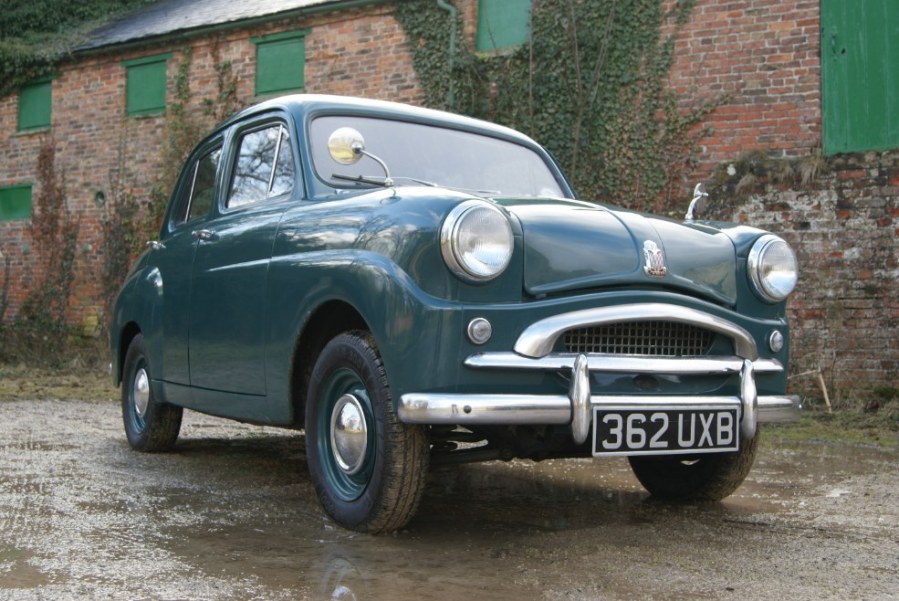
Repair sections and panels for the most egregious rot spots are available, but anything more than that will present a challenge, albeit one that can be lessened significantly through membership of the Standard Motor Club which holds and continues to accrue stocks of new and second-hand parts. The other thing in favour of the small saloons these days is that the real rot-boxes have long since vanished – you’re much more likely to come across a basically solid car than you would have done when trawling the small ads in the 1970s, when there was a real risk of ending up with something full of filler and newspaper.
The utterly conventional design of the Standard means than the buying advice verges on the generic. Like any unitary-build classic the first area to check must be the sills. They have outer and inner sections and both should be inspected (visually and by gentle tapping with a hammer – and ideally with a magnet to find any fibre glass or filler) for solidity. Check the outer sill especially carefully at its front end where it forms the front wheel arch and where the front wing abuts it. Look for welds showing previous repairs, and if they’re present make sure that they’re good quality and that new panels haven’t simply been welded over rusty originals.
The outer sills rust due to being doused in road water and mud while the inner ones go if the door and window seals are poor (more common now on old cars with hardened rubber parts). Lift the carpets and look for rusty floors and footwells and general dampness. Repair panels for the inner and outer sills are available from the SMC for about £65 each. Floor and footwell panels are not available but are simple enough to be fabricated by a decent body shop – at a cost.
Damp and rusty footwells can also be caused by more serious trouble with a leaky scuttle vent flap. If the seal is perished or the flap lid itself is rusty, rainwater gets into the scuttle and then rots out the inner dashboard and, eventually, the bulkhead. So make a close inspection of the flap and scuttle on the outside, and the footwells and up behind the dashboard on the inside. Rust here should be a major cause for concern.
The Standard’s nearly full-width bonnet gives a good view of the inner wings. Check the inner wings all over, especially around the front subframe mounts. From underneath, check (by eye and hammer) the condition of the subframe itself, including the front parts that protrude from under the grille and where the bumpers attach. Localised rust here can be patched but more serious rot in the subframe will require, at best, removal, strip down and a lot of fabrication to put right. Oil leaks from the engine usually preserve it fairly well, but with cars well into their 60s now be on watch. Look at the bulkhead to be sure it isn’t rusty from either a rotten scuttle vent, acid spills around the battery or fluid spills around the brake and clutch reservoirs.
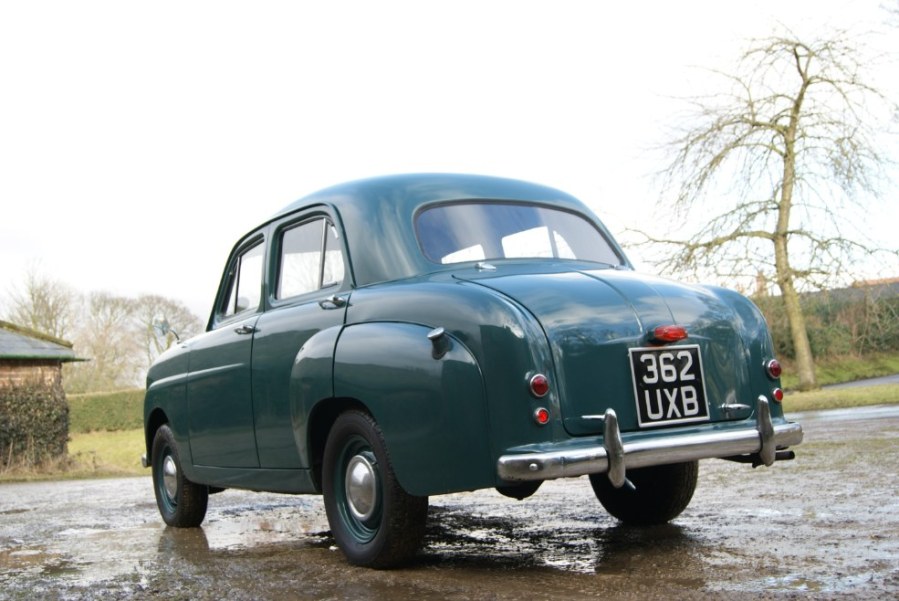
A prominent feature of the Standard 8, 10 and Pennant was their bolt-on wings, but you can’t really count on replacements being available today, so check the outer wings carefully. The front wings are especially prone to rust around the headlamps, and separate repair sections covering this complete area are available, but are tricky to weld in.
The other key area, also served by an off-the-shelf repair panel, is the rear lower corner of the wing from above the front sill. The rear wings also rust at their rear lower corner (near the rear bumper) and new panels for this area are unavailable. Also check the waistline where the bulge of the rear wing meets the body for bubbling paint or surface rust, as water can get under the paint here.
Front and rear wheel arches rust in the usual way – no specific repair patches are available but they are not too difficult to put right so long as the corrosion is light and localised. The doors can rust at their lower edges (and on early cars at the top edges around where the B-pillar semaphore indicators were fitted). Secondhand doors are stocked by the SMC and do show up at autojumbles, but good condition doors for early cars with sliding windows and semaphores are very hard to find now.
Perhaps surprisingly, chromework, badges and other body trim parts are not so much of an issue since they are fairly widely reproduced new. This includes bumpers and hubcaps. The availability tends to favour the later and higher-spec cars, though, so if looking at an early 8 then be sure that what little brightwork it has is in good condition.
Engine and transmission
The Standard 8 was the debut of the Standard-Triumph ‘SC’ (‘Small Car’) four-cylinder OHV engine that would power a plethora of classic Triumphs right through to the 1980s and would be expanded to six-cylinder form for larger and more exotic models. It proved generally reliable in much higher capacities and power outputs so there is little to worry about when looking in the engine bay of a Standard.
Look for generic signs of wear – major oil leaks from the crank seals, especially at the rear (although modest drips are par for the course), seeping rocker cover gaskets, blow-by from the oil filler cap when the engine is idling, blue exhaust smoke and dark, cruddy oil. As standard (pun not intended) none of these cars have oil pressure gauges, so check that the warning light doesn’t flicker when idling warm and goes off reasonably quickly after a hot start. Aftermarket gauges are not uncommon, in which case you ideally want to see 20psi at a hot idle and at least 40psi when driving with everything up to temperature.
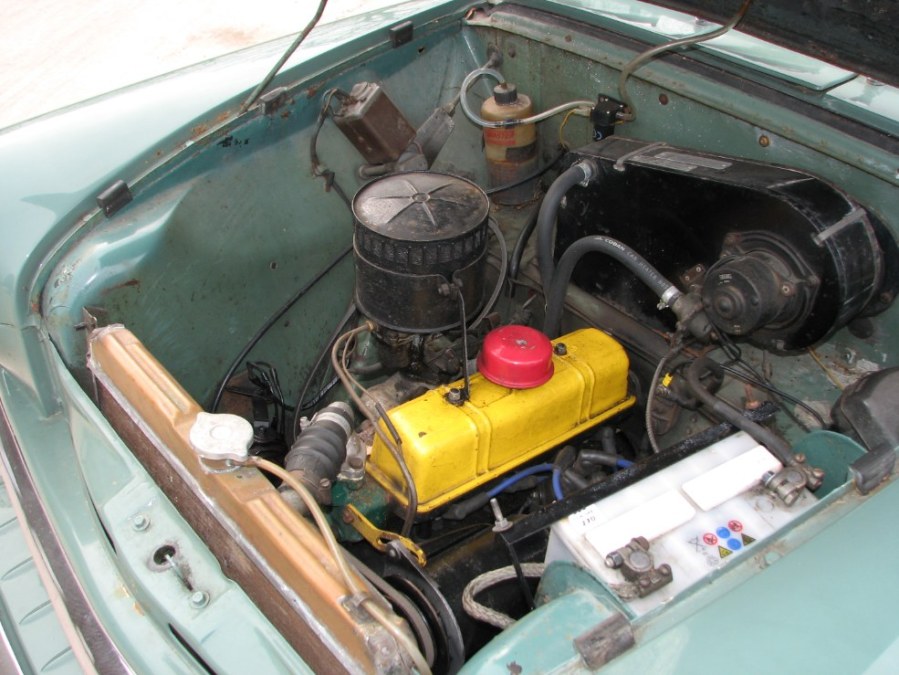
These engines don’t have entirely bombproof bottom ends, but this is more of a problem for the 1.5-litre, 60-something horsepower versions of later decades. Just listen for rumbling and knocking under acceleration. Parts availability is so good for these engines, and working on them is so simple, that it’s probably worth accepting a thoroughly worn-out motor in an otherwise decent car – that’s certainly preferable to the other way around.
The Achilles’ heel of the SC engine is its thrust bearings, which suffer from an inherently weak design that is only just up to the loads imposed in a small saloon with a sub-one-litre capacity. They wear quickly and this causes further wear to the crankshaft, main bearings and, in serious cases, damage to the block itself. It’s easy to check for though; if there’s any drop in engine speed when the clutch is depressed with the engine idling and the gears in neutral, then be very suspicious. An assistant is valuable here to work the clutch so you can look at the front crank pulley for any visible back and forth motion. In bad cases you’ll find freeplay that can be felt by hand when pushing and prodding on the front pulley (with the engine stopped, of course). Damaged thrust, main and big end bearings can also be indicated by silvery deposits and swarf in the engine oil.
As with the engine, the Standard 8, 10 and Pennant saw the introduction of the SC line of gearboxes to go with the SC engine, and this would also see service through many variants and alterations in small Triumphs for the next three decades. There are no real difficulties here, with the only issues being mileage-caused wear. Synchromesh is on the top three gears and can give up the ghost after a few decades (especially the third to second set), giving crunchy changes. Rumbles and whirs indicate worn shaft bearings while whining and shrieking under load points to worn gears. Badly worn ‘boxes will jump out of gear when power is suddenly applied or taken off. Most of the consumable parts are available new, the unit is dead simple and is an absolutely known quantity so rebuilds are definitely cost-effective. These gearboxes are known to have chattering idler gears when in neutral, first and reverse (which disappears when the clutch is depressed) so this is not a cause for concern.

From 1957 the Standard 8, 10 and Pennant were available with a Laycock electric overdrive, which answered a standing criticism of the cars – their low overall gearing. It’s a desirable feature to have today given modern traffic conditions. The Laycock units are well-supported for parts and repairs so just check that it operates as it should (it can be engaged on all gears except first and reverse). Intermittent or non-engagement is likely a bad electrical connection at the control points, the inhibitor switch or the solenoid. If it engages but doesn’t stay engaged (especially when warm), it’s likely to be an internal fault like a worn clutch or actuating cam, which will require a strip down and rebuild. Noise and vibration usually points to mechanical wear in the bearings or gears.
Later cars came with the option of ‘Standrive’, which was semi-automatic ‘two pedal’ system with a centrifugal clutch that could also be operated via a servo-control button on the gear knob when on the move – the system even automatically blipped the throttle when changing down the gears. Although it worked well enough when new, it was an expensive option and was full of solenoids and vacuum valves and needed to serviced and adjusted by a specialist.
Standrive cars did not sell widely and quickly fell into disrepair on the used market – they are exceptionally rare now and, while the system is the same as the ‘Manumatic’ fitted to some BMC cars of the era, parts and know-how are very hard to find. They make for an interesting and very unusual find today but if you want one (and find one) ensure that the system works as it should in all respects and driving conditions, and ideally you want a box of spares included!
Suspension, steering and brakes
This is all simple and hardy stuff that only really needs to checked for general faults and wear. Bounce each front corner and check that the dampers arrest the body motion in a single up/down/return cycle. It’s easy to get hold of new springs and dampers for the front, so worn parts here are not an issue. Also available new via the SMC are sets of rubber donut bushes for the front subframe mounts, of which there are three per side, which can be badly perished given the age of these cars now.
The SMC also makes new bushes for the suspension arms, of which there are six per side – two at the inner ends of the upper wishbone, two at the inner ends of the lower wishbone, and two at the trunnions on the lower wishbone. Give all of these a firm pry with a bar, and wobble the front wheels when supported off the ground to inspect for wear. Wheel bearings are also available off the shelf if these show signs of wear.
At the rear, look at the lever arm units for signs of oil leaks from the valve bodies and arm spindles. Check that the leaf springs are not seized solid, splaying apart with rust or sagging with age – new springs are not available so these need to be in decent condition. Shackle bushes and bolts are available, so if these are worn that’s not a problem.
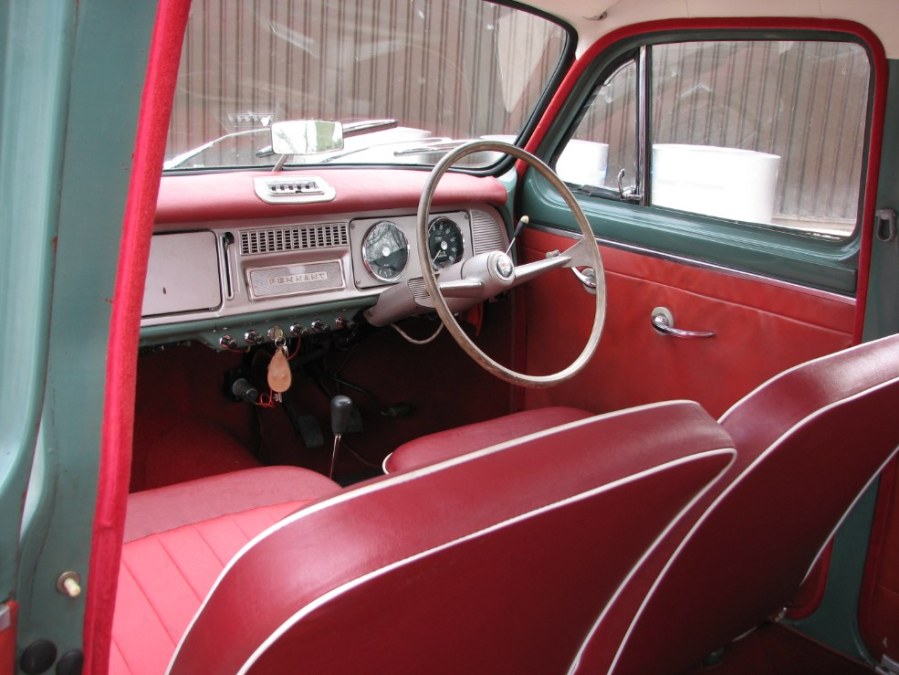
None of these cars came with anti-roll bar as standard but Standard did offer a front bar as an aftermarket option. The SMC sells a complete kit which can be fitted without drilling or cutting and offers a significant benefit in roadholding and cornering.
With the steering, beyond looking for play in the joints, the key is adequate lubrication of the steering box, so check that this looks fresh and correct. The Burman box wears relatively quickly, shown by excessive slop in the steering and, when especially bad, free play allowing the steering wheel and column to be pulled back and forth. The parts needed to rebuild a steering box can be bought via the SMC and the Club does also run an exchange scheme on rebuilt boxes at a cost of around £450 per unit.
The brakes need checking only in the general sense. Although they will need more planning and pressure than a more modern system, they should provide perfectly good stopping power for a car as light and as modest in performance as the small Standards. Check that the car stops evenly, without pulling to one side, and that there is no softness or tendency to ‘pump up’ at the pedal, which would indicate a worn master cylinder. Leaky wheel cylinders and contaminated shoes will also lead to uneven and poor performance, while warped drums will show with grabbing and vibration. Aftermarket kits to add a servo and front discs exist, both of which can add greatly to the usability while detracting from the originality.
Interior, trim and electrics
There isn’t much to the interior of a small Standard, but what is there really needs to be in good – or at least acceptable – condition since sourcing replacement trim parts is difficult and getting scrappy bits refurbished or replaced from scratch is expensive. The SMC does hold a stock of decent secondhand seats available to members, but they may not match the colour of any given car and will still be 60-plus years old. The door trims and headlining are even harder to find, although a trim shop would be able to make up a replacement headlining at only moderate expense.
All of the above applies, but even more so, to the Companion estate – interior and trim parts specific to these are extremely scarce.
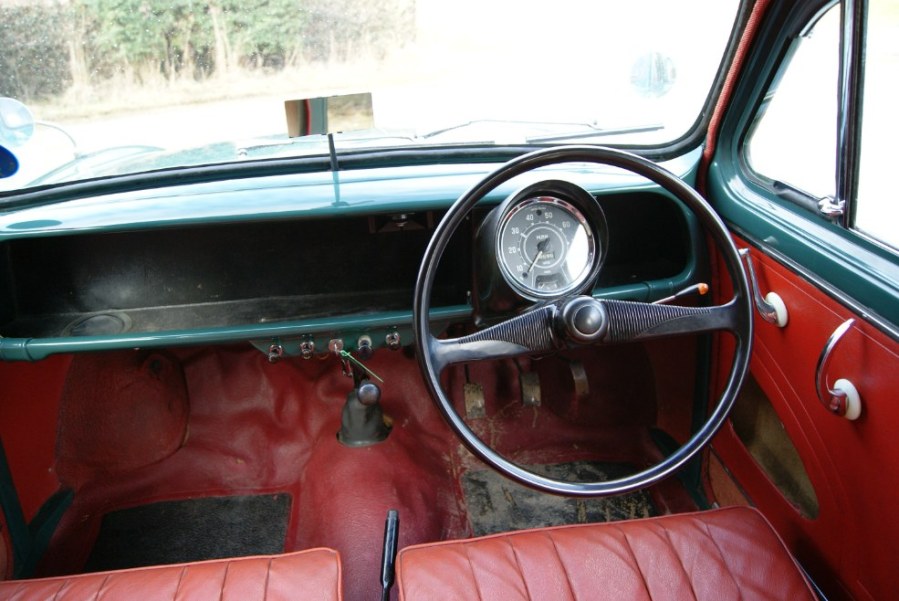
Lights, switches and instruments are industry-standard bits and some are available new, although faulty instruments will more likely need to be rebuilt by a specialist. The Pennant with its different fascia has different instruments which are much rarer to find now, and the same goes for Pennant-specific interior parts.
The lighting acceptable on 1950s economy cars is very different what’s expected today, so it’s unsurprising that a kit to convert these cars to halogen headlamps is available. It’s a very desirable upgrade to find these days. So is a conversion to an alternator – using a unit off a later version of the SC engine is the most common and cost-effective, but there are ‘stealth’ kits out there that add an alternator that looks like a dynamo for those who want to maintain the period appearance.
Standard 8, 10 & Pennant: our verdict
The small Standard saloon range is greatly overshadowed by more prominent rivals and, if remembered at all, is remembered for the startlingly low specification of the original model. That is unfair to what was actually a remarkably modern and clever car that managed to offer more than many competitors at a lower price. While Austin and Morris let their products stagnate, Standard carried out small but continuous improvements that resulted in a practical and generally well-engineered car with few foibles.
The Standard 8, 10 and Pennant are not glamorous or exciting but they do have a huge amount of charm. Thanks to their rugged design, how long their drivetrains were used after the model’s demise and the efforts of enthusiasts and owners’ clubs they are remarkably easy to live with so long as you procure a decent example in the first place.

And that won’t cost much: Values don’t vary much between the models, and (excepting those prepped for historic race series) the most expensive examples of either of the trio do not go for much over £7000, for which you can pretty much expect perfection. A perfectly good and presentable one with no real issues will be £4000–5000 and something scruffy but usable will come it at £2000–3000. Below that come projects, with a complete and viable candidate restoration rarely commanding more than £1000.
The reputation of the Standrive-fitted cars cancels out their rarity, so there is no discernible difference in values for them. Companion estates are worth about 25 per cent more than an equivalent 10 saloon.
Standard 8, 10 & Pennant timeline
1953
Standard 8 launched, with 803cc 26bhp engine and direct-action gearchange. No boot opening, hammock-style seats with synthetic fabric and sliding windows. One windscreen wiper and sun visor as standard, with second items and hubcaps optional.
1954
The Standard 10 is introduced in March. 948cc 33bhp engine, Vynide trimmed and upholstered seats, two sun visors, two windscreen wipers and hubcaps as standard, plus a chrome radiator grille. The Companion five-door estate car (below) is introduced in October, based on the engine and trim of the 10.
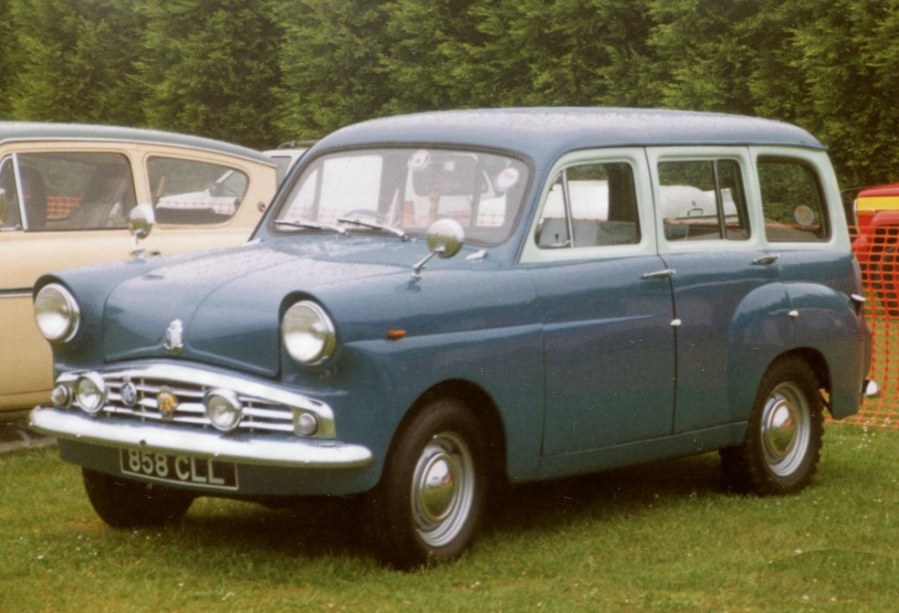
1956
Introduction of the Super 8 and Super 10 models. The Super 8 is essentially a Standard 10 with the engine from an 8, while the Super 10 features a proper boot lid and more exterior chrome (such as bumper overriders). Shortly afterwards the Family 10 is launched, which combines the engine of the 10 with the basic body and interior of the 8.
1957
What are now known as the Phase 2 models are launched in March. They now have ‘Gold Star’ engines with higher compression ratios (and gold-painted rocker covers), making 30bhp in the 8 and 37bhp in the 10. Laycock overdrive now optional on both models, and both feature a restyled grille. All have boot lids other than the most basic (and rarely purchased) Standard 8.
The Standard Pennant is launched in October, being effectively a high-spec 10 with finned rear quarters, a full-width grille, optional two-tone paint, a full-width dashboard, duo-tone ‘Vynair’ interior and a remote gearshift. The Pennant also features variable-rate rear leaf springs for an improved ride quality, which are gradually introduced to the other models during 1958.
1959
With the start of Triumph Herald deliveries, production and sales of the Standard ‘SC’ range ceases in November. Sales of the 8 cease immediately, while those of the 10 and Pennant continue at a slow pace until early 1960, ending once stocks are depleted.
1961
The Companion remains in production until the launch of the Herald 1200 Estate in the summer. In total over 369,000 of the Standard 8, 10 & Pennant family were built, of which the Ten accounted for over 172,000.

